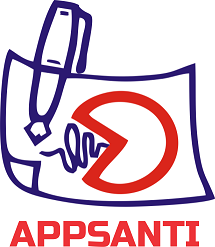Pelaksanaan Pembelajaran Blended Learning dalam Mata Pelajaran Sosiologi Kelas XI (Studi Kasus SMA Negeri 1 Batang Anai)
DOI:
https://doi.org/10.24036/nara.v1i3.67Keywords:
Blended learning, Sociology, LearningAbstract
This research is motivated by the researcher's interest in seeing problems during online learning last semester, many student learning outcomes were low due to the many assignments given by the teacher in all subjects so that they piled up which resulted in students becoming tired and not enthusiastic in learning and making student learning outcomes. be decreasing. In this study, researchers will try to see the obstacles in the application of the blended learning learning system in the success of the learning process for sociology subjects. The purpose of this research is to explain and describe how the implementation of blended learning in SMA Negeri 1 Batang Anai and what are the obstacles faced during the implementation of Blended Learning at SMA Negeri 1 Batang Anai. This research was analyzed using cybernetic learning theory which is an absorption word from the word cybernetic, namely control and communication systems that allow feedback. Cybernetics is a branch of science that pays attention to communication problems and the flow of information obtained as a complex system. The research uses a qualitative approach with the type of case study research. Data collection begins in April 2022-May 2022. The research location is in SMA Negeri 1 Batang Anai. The informant selection technique was carried out by purposive sampling technique with 9 informants. Data was collected by means of observation, interviews and documentation studies, data collection using triangulation techniques and analyzed by Miles and Huberman analysis techniques, namely data reduction, data presentation and data verification. The results of this study found that the obstacles in implementing the blended learning learning system at SMA Negeri 1 Batang Anai were: 1) lack of student motivation during online learning, 2) poor signal constraints during online learning, and 3 ) low student learning outcomes.
References
Dwiyogo, W. D. 2018. Pembelajaran Berbasis Blended Learning. Depok: Rajawali Pers.
Thobroni. 2015. Belajar dan Pembelajaran. Yogyakarta: Ar Ruzz Media.
Moleong, Lexy J. 2013. Metode Penelitian Kualitatif. Edisi Revisi. Bandung: PT Remaja Rosdakarya.
Kusairi, Sentot. 2011. Implementasi Blended Learning. Makalah disajikan dalam Seminar Nasional Pengembangan Pembelajaran Berbasis Blended Learning. Jurusan Biologi FMIPA UM, Malang.
Basrowi.(2008). Memahami Penelitian Kualitatif. Jakarta: Rineka Cipta.
Nugrahani, Farida. 2014. Metode Penelitian Kualitatif dalam Penelitian Pendidikan Bahasa. Solo:Cakra Books.
Narimawati, Umi. 2008. Metodologi Penelitian Dan Kuantitatif, Teori Dan Aplikasi. Bandung: Agung Media 9.
Moleong, Lexy J. 2013. Metode Penelitian Kualitatif. Edisi Revisi. Bandung: PT Remaja Rosdakarya.
Rahyubi, Heri.(2014). Teori-Teori Belajar dan Aplikasi Pembelajaran Motorik Deskripsi dan Tinjauan Kritis. Bandung: Nusa Media.
Pane, Aprida. & Dasopang, M. Darwis. 2017. Belajar dan Pembelajaran. Fitrah:Jurnal Kajian Ilmu-ilmu Keislaman.
Rusman. (2011). Model-model Pembelajaran Mengembangkan Guru. Jakarta: Raja Grafindo Perkasa.
Husamah. (2014). Pembelajaran Bauran Blended Learning. Malang: Prestasi Pustakarya.
Asep Jihad dan Abdul Haris. 2009. Evaluasi Pembelajaran. Yogyakarta: Multi Press.








.png)












